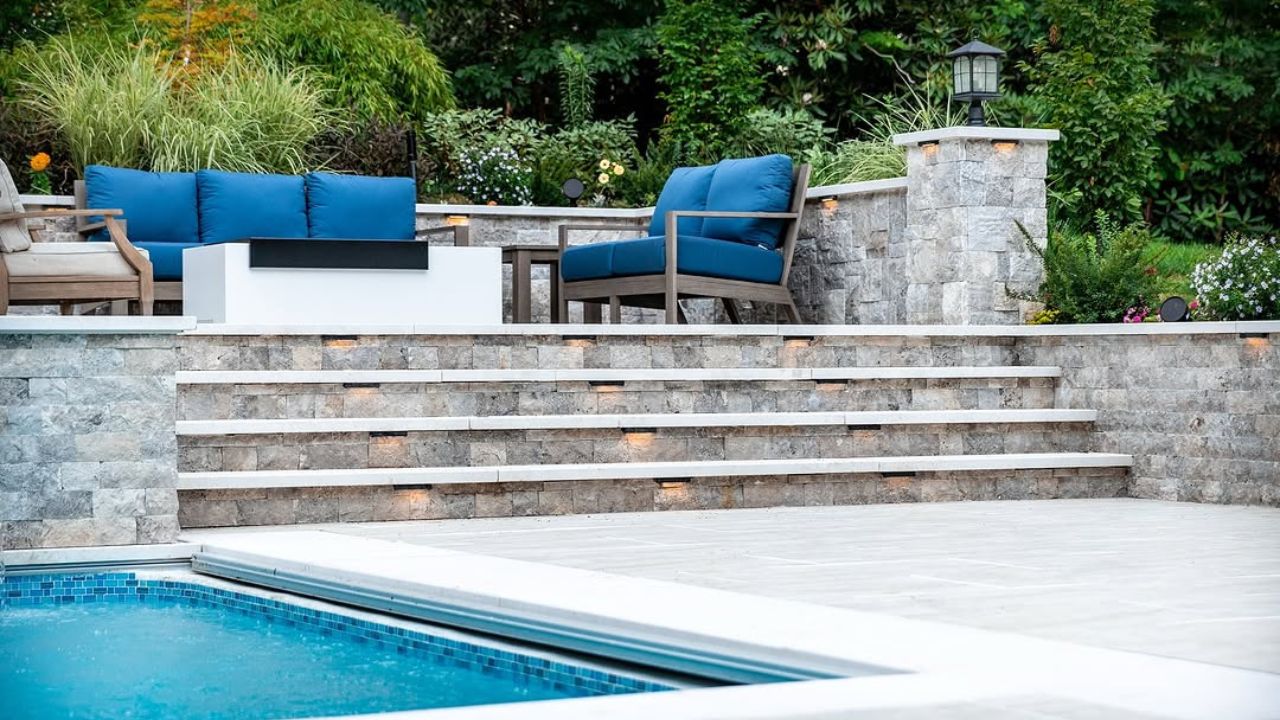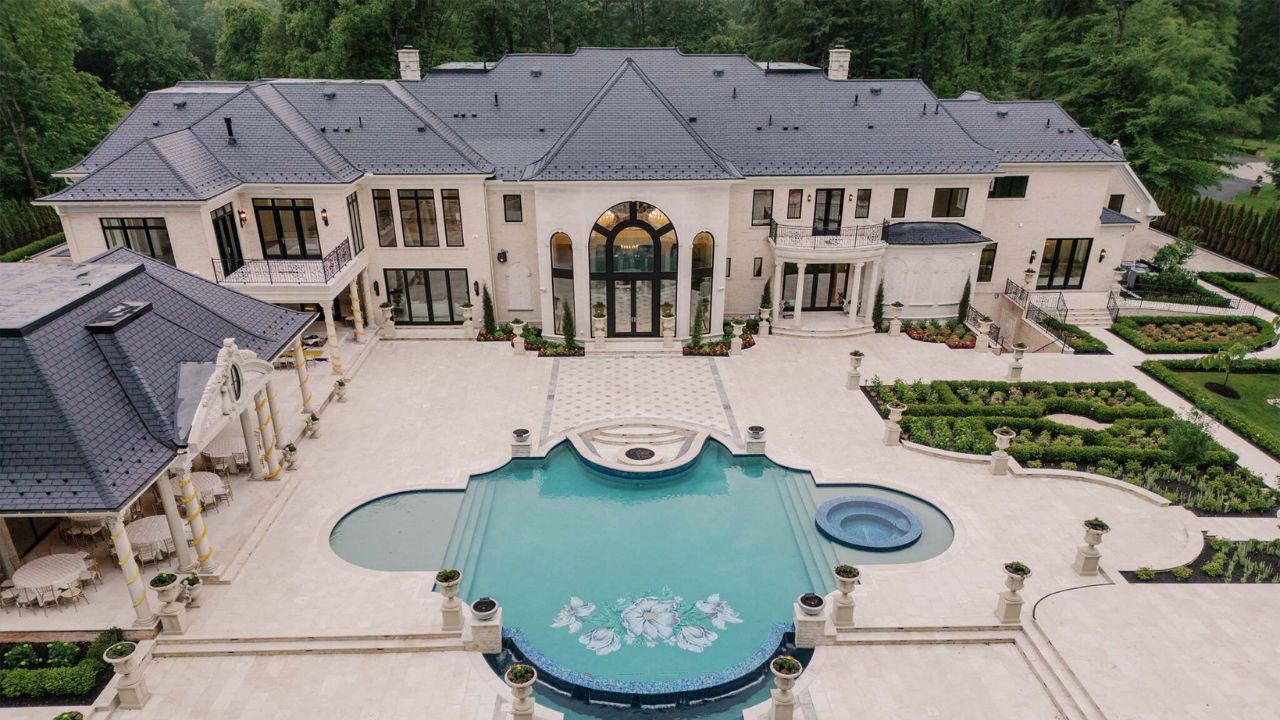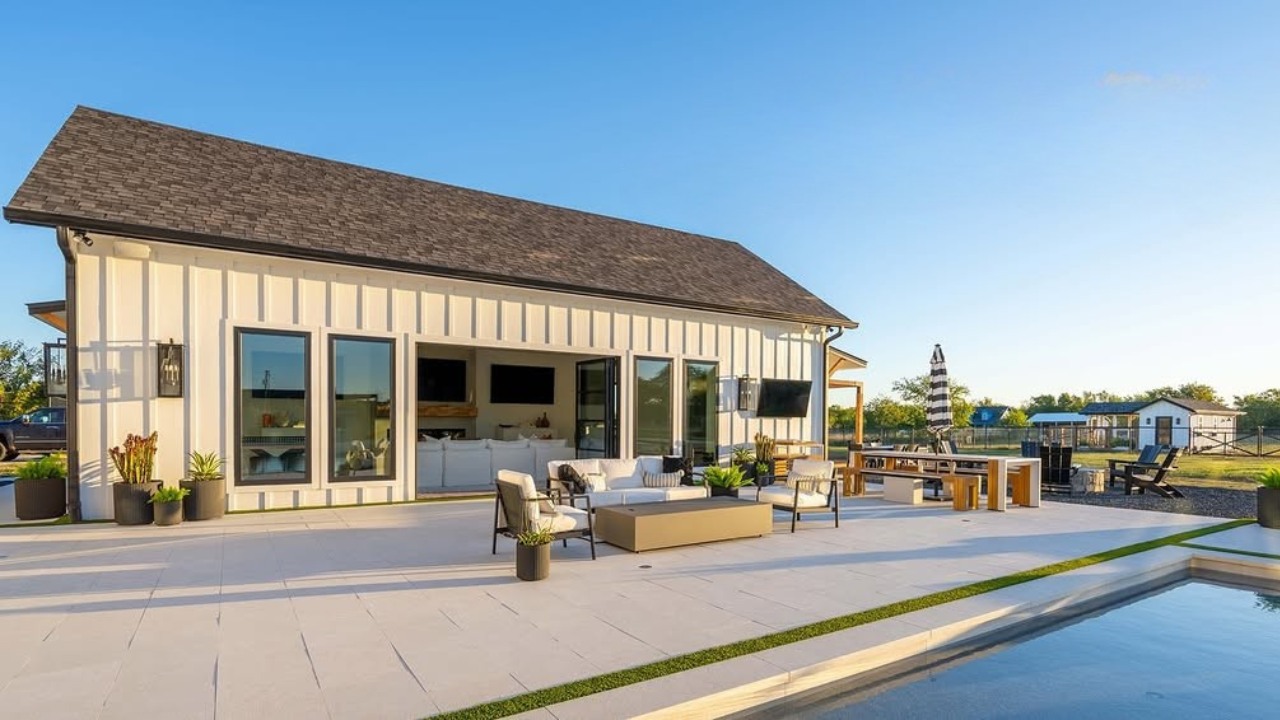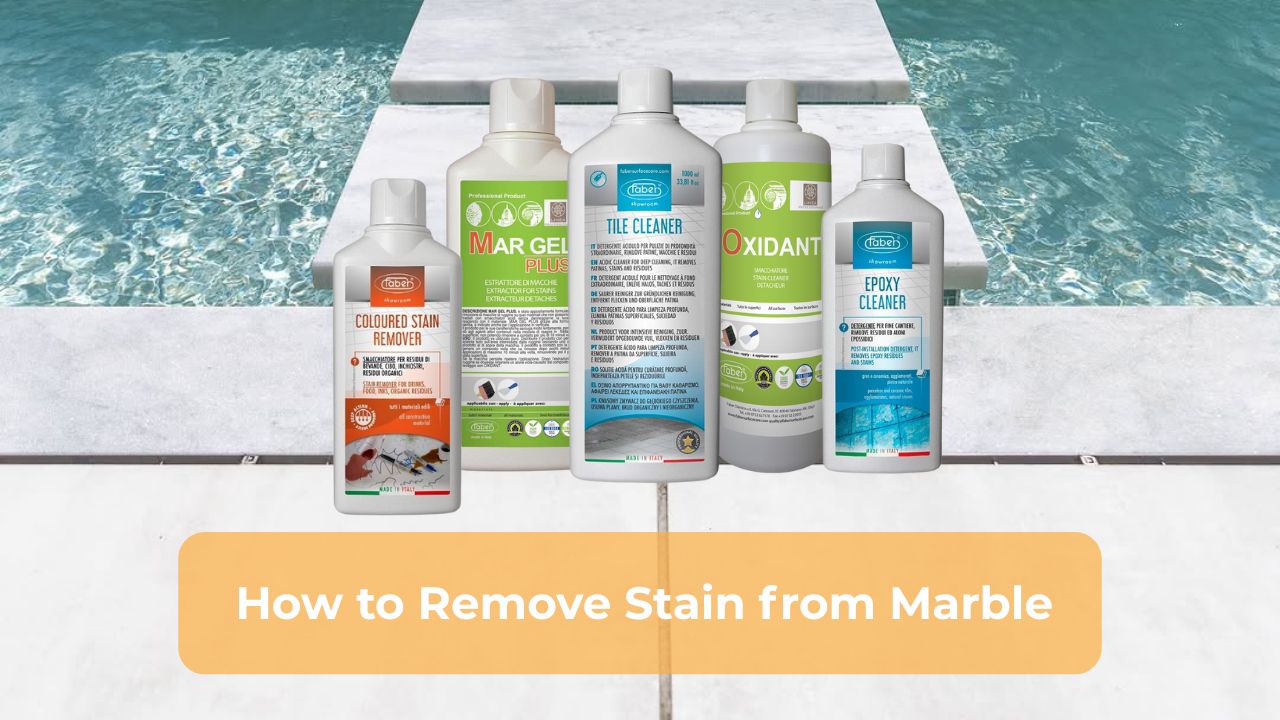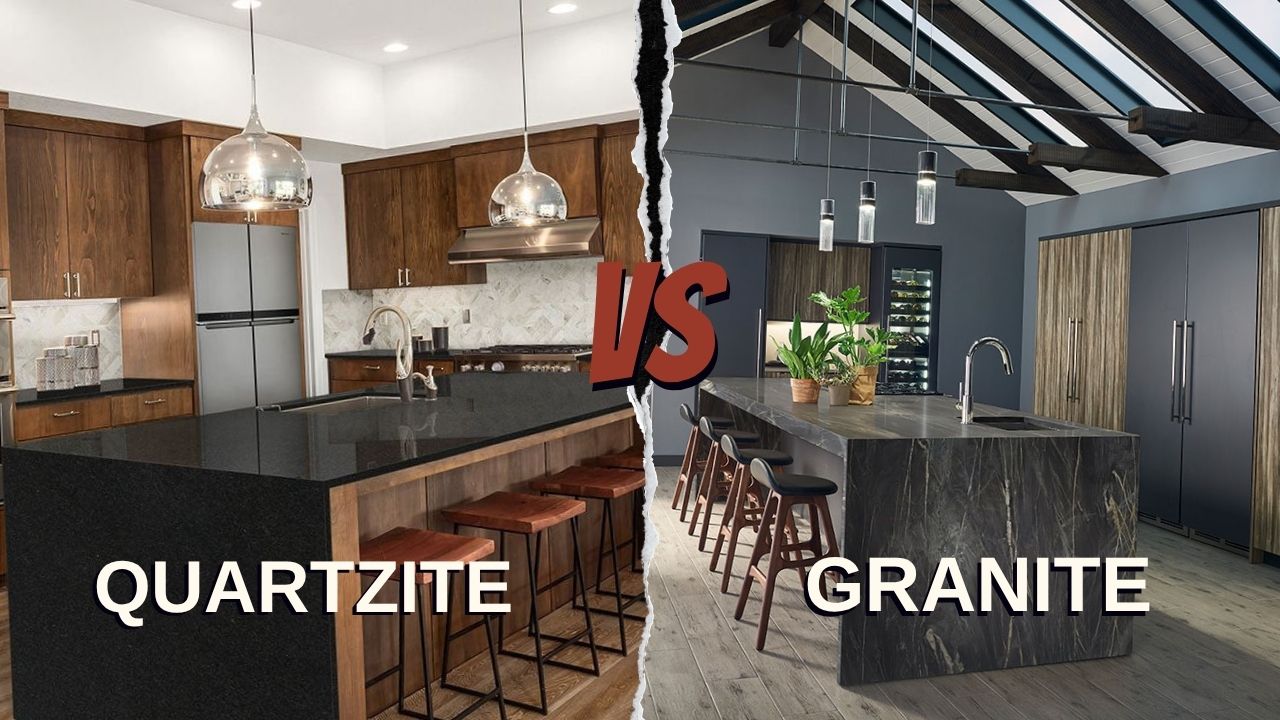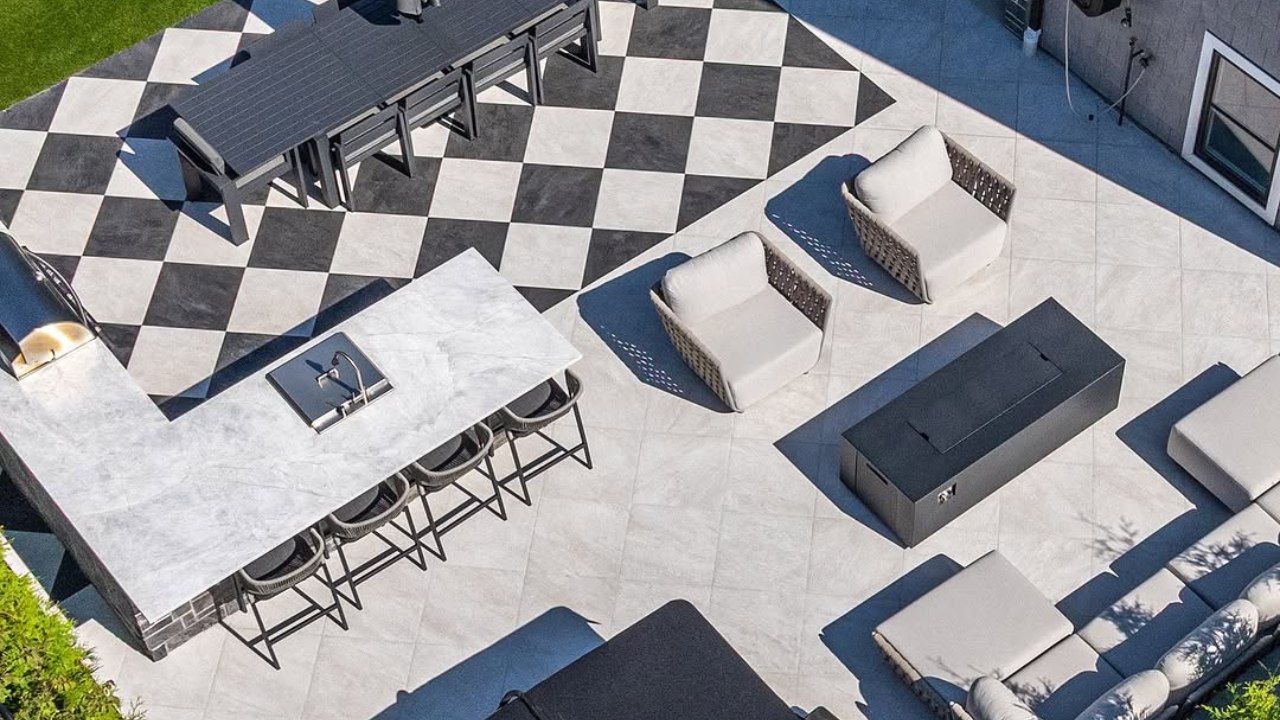Stone has been a part of construction for centuries. They are strong and add beauty and strength to the structure. The modern building construction industry now has a wide range of stones that are chosen according to their durability, natural beauty, and versatility. Choosing the right stones like granite, marble, or travertine as building material depends on the construction requirement, structure design, appearance, and weather resistance. Here are the top 15 types of building stone used in construction, explained.
Popular Types Of Stone Used in Construction
Though there are several stone types used in construction and masonry work, here are our picks for the most commonly used stone as a construction material.
1. Granite
Granite is a stone with strength that is formed from cooled magma. Its formation makes it the hardest and most durable natural stone. You can find a wide range of colors from black, pink, red, to gray. It usually has a granular texture. Granite Countertop is the best stone when it comes to high weather resistance, scratch resistance, and weight-resistant. This is one of the strongest types of stone used in construction. It is also used in building commercial and residential structures and for decorative purposes. It’s popularly used in foundations, flooring, paving, kitchen countertops, bridges, and monuments.

Pros Of Granite:
- It is extremely durable and strong
- High resistance to scratches and wear
- Weather and water-resistant
- Available in many colors and finishes
- Low maintenance
Cons Of Granite:
- Heavy stone that requires professional installation
- Higher cost compared to other stones
- Requires skilled labor for cutting and polishing
2. Marble
It is one of those types of stone used in construction that screams luxury with its appearance. It is a metamorphic rock that is extracted from limestone. It forms under intense heat and pressure. Marble is popular for its luxurious look, unique veining patterns, and polishability. It is widely available in black, green, pink, black and white tones. Marble has a softer surface than granite, but under the right situations, it creates a striking look. Marble pavers are widely used for building luxurious flooring, wall cladding, decorative columns, staircases, and sculptures.
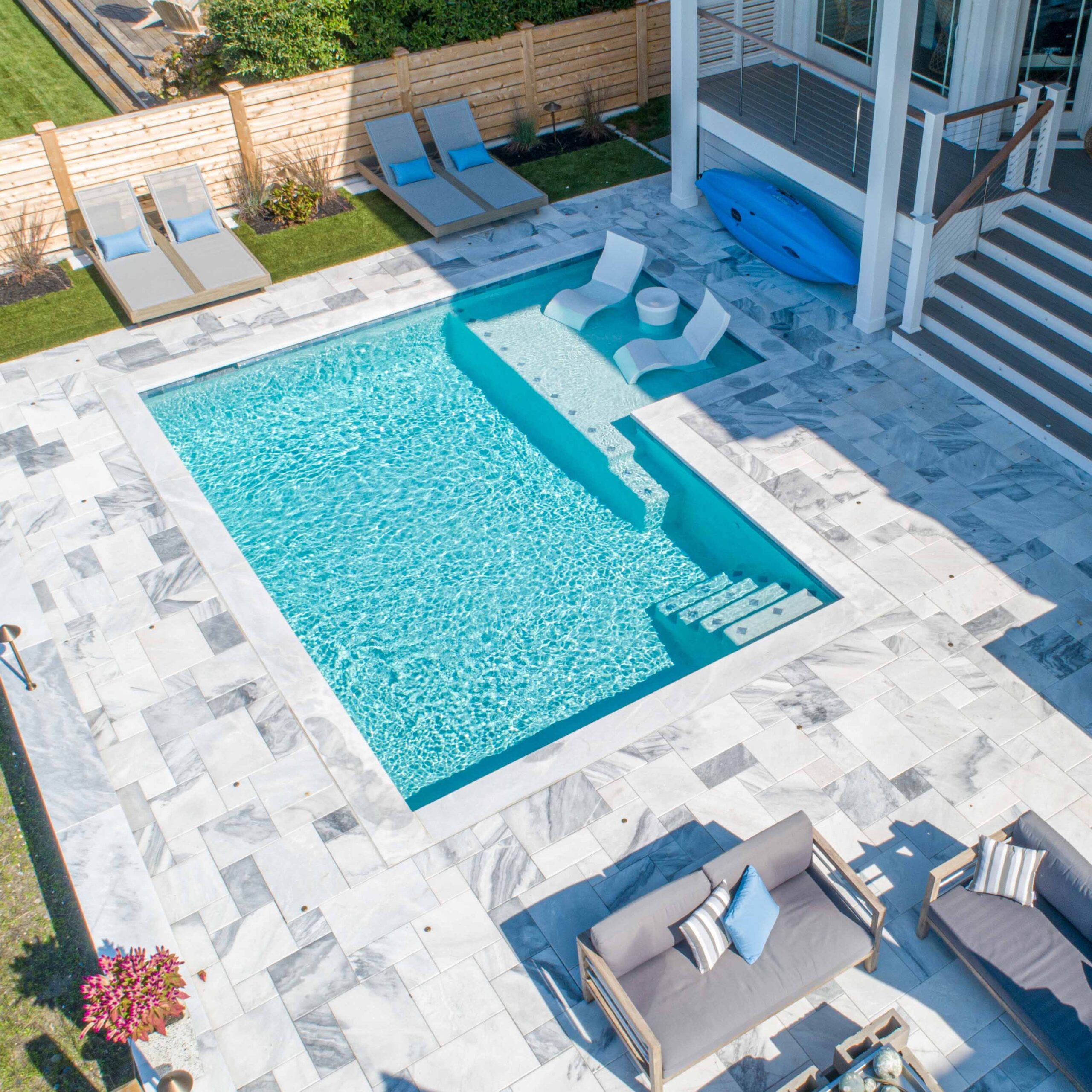
Pros Of Marble:
- It has an elegant and ageless appearance
- Can be polished to a high shine
- It is available in various colors and patterns
- Adds property value
Cons Of Marble:
- Prone to staining and scratching
- Requires frequent maintenance and sealing
- Marble is expensive compared to other stones
- Slippery when polished
3. Limestone
It is a sedimentary rock that is formed by calcium carbonate. Limestone is generally soft, easy to cut, and comes in a wide range of colors. Common limestone color pellets include white and gray to tan and yellow. It weathers into unique textures, making it popular for construction and decorative work. Limestone pavers are used in the construction of blocks, flooring, facades, cement manufacturing, and landscaping.

Pros Of Limestone:
- It is easy to cut and shape
- Budger-friendly compared to marble and granite
- Attractive natural look
- Good for both modern and rustic designs
Cons Of Limestone:
- It has Low resistance to acids and chemicals
- Limestone is softer than granite, prone to scratches
- Requires sealing for long-term use
4. Sandstone
It is a sedimentary rock that is formed from compacted sand grains. Sandstone has a grainy surface that is surprisingly durable. It is available in earthy colors like brown, yellow, and red. The natural textured surface offers slip resistance and longevity when properly sealed with a penetrative sealer. Sandstone pavers are widely used in paving, wall cladding, pillars, garden walkway features, and flooring.

Pros Of Sandstone:
- It has excellent slip resistance
- Weather-resistant and durable
- It’s natural, earthy tones enhance aesthetics
- Easy to work with
Cons Of Sandstone:
- The porous surface absorbs water easily
- Can erode over time in harsh climates
- Needs sealing for outdoor use
5. Slate
It is a metamorphic rock that is formed from shale under heat and pressure. Slate look porcelain tile features a fine-grained texture and splits into thin sheets. This makes it perfect for roofing and tiles. You can find it in colors like black, gray, green, and purple. It is widely used in roofing tiles, wall cladding, flooring, and decorative elements.

Pros Of Slate:
- It has great water resistance
- Non-slip surface
- Elegant natural finish
- Fire-resistant
Cons Of Slate:
- Brittle, can crack under heavy loads
- Limited color range compared to granite or marble
- Higher installation costs
6. Travertine
It is a popular stone used in construction for centuries. Travertine is a type of limestone formed around mineral springs. It is popular for its porous texture and earthy colors. It features colors like cream, beige, and rust. This is the type of stone used in construction for flooring, outdoor stone paving, patios, pool surrounds, and facades. Travertine pavers are known for their beautiful aging.
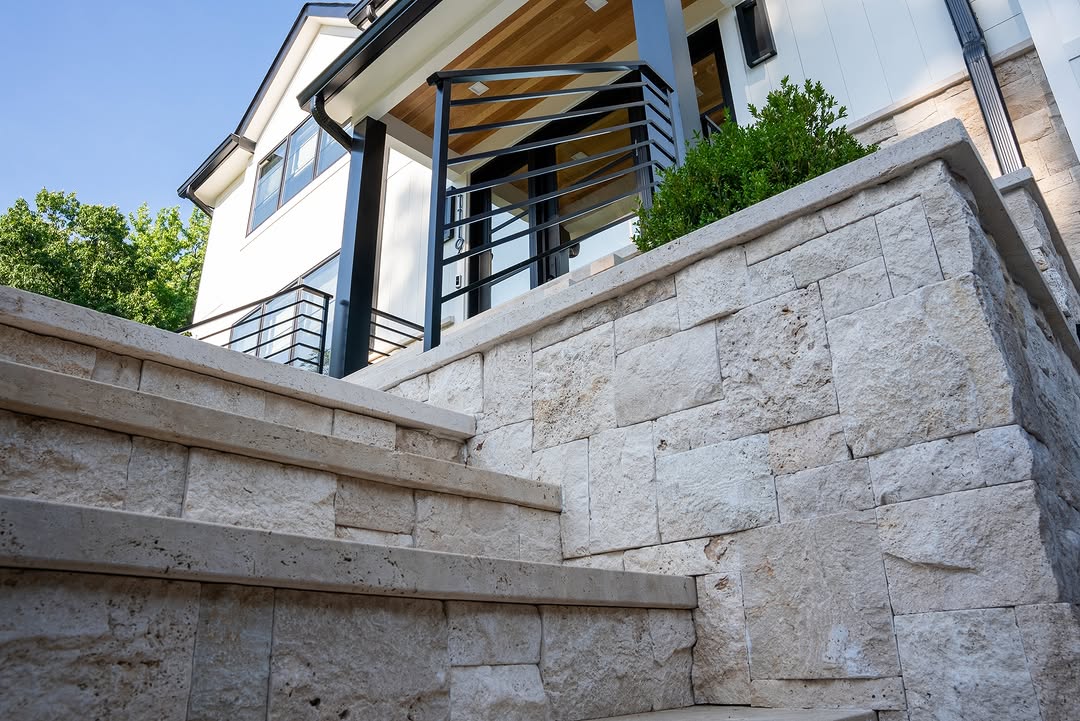
Pros Of Travertine:
- Natural and warm appearance
- Non-slippery, good for outdoor use
- Stays cool in hot climates
- Environmentally friendly stone
Cons Of Travertine:
- Porous, requires regular sealing
- Not suitable for areas with freezing temperatures
- Weaker than granite and marble
7. Quartzite
It is the types of stone used in construction because of their durability. It is also a hard metamorphic rock with a glassy appearance. Quartzite is also highly resistant to heat and abrasion. It is commonly used in natural stone flooring, countertops, staircases, and railway ballast. This stone even outperforms granite when it comes to durability.
Pros Of Quartzite:
- Harder than granite in many cases
- Highly resistant to weathering
- Long-lasting and low-maintenance
- Available in unique patterns and colors
Cons Of Quartzite:
- More expensive than sandstone and limestone
- Difficult to cut and shape due to hardness
- Limited availability in some regions
8. Basalt
Basalt look porcelain is one of the strongest types of stone used in construction after granite. However, it is often overshadowed by the granite. It is a common material for rubble masonry technique. It is a dark-colored igneous rock that is fine-grained and very strong. It is commonly used where strength and durability are required. This makes it a making it a popular choice for road construction, pavements, flooring, and as aggregates in concrete.

Pros Of Basalt:
- Basalt is extremely strong and durable
- Resistant to weather and wear
- Cost-effective for structural uses
- Widely available in nature
Cons Of Basalt:
- Limited decorative appeal
- Heavy and difficult to work with
- Limited color options (mainly dark gray or black)
9. Gneiss
Gneiss is a widely used metamorphic rock with unique and subtly different light and dark mineral bands. It is one of those types of stone used in construction that offers a distinct appearance with rugged strength. Its formation gives it a high compressive strength and a decorative texture. This makes Gneiss both practical and aesthetic for interior design. This stone is not widely common but is used in residential and commercial stone paving, flooring, walls, and ornamental works due to its strength.
Pros Of Gneiss:
- Strong and durable
- It features an attractive banded appearance
- Weather-resistant
- Long-lasting even in harsh climates
Transform Your Space with Premium Stone & Porcelain Pavers
Backed by Double Quality Control. Available Across the USA.
Cons Of Gneiss:
- Less common than granite and limestone
- It can be costly depending on the quality
- Not as easily polished as marble
10. Laterite
It is a sedimentary rock that is rich in iron and aluminium. It has a distinct reddish brown appearance, which looks perfect in traditional architecture. Though laterite is soft when freshly quarried, but hardens on exposure. This makes it an ideal choice for traditional construction. It is commonly used in road construction, building blocks, rural construction, and road works, where strength and durability are crucial.
Pros:
- Low cost and locally available in many regions
- Easy to cut when freshly quarried
- Strong and durable after hardening
- Eco-friendly material
Cons:
- Not as durable as granite or marble
- Porous, requires protective coatings
- Limited decorative appeal
11. Onyx
Onyx is a decorative stone that is popular for its translucent and striking banded patterns. It lets the light pass through it, which makes it one of its kind stone used in construction. It also belongs to the quartz stone, so it is also resistant to high temperatures, chemicals, weathering, wear, and tear. However, it is softer and less durable than granite or quartzite, but is often used for luxury interiors. Its applications include high-end countertops (commercial and residential), wall panels, and decorative elements.
Pros Of Onyx:
- Unique and luxurious appearance
- Can be backlit for dramatic effects
- Adds value to interiors
Cons Of Onyx:
- Very soft and prone to scratches
- Expensive and rare
- High maintenance requirement
12. Quartz (Engineered Stone)
Though natural quartz exists but engineered quartz is technically 90% crushed quartz combined with 6-10% polymer and resin pigments. The resulting surface is hard, non-porous, low-maintenance, and versatile. It is widely used in modern construction, from quartz kitchen countertops to floors and luxurious outdoor areas. Its durability almost equals that of porcelain, which means it can resist scratches, stains, moisture, and daily wear and tear. It is commonly used in kitchen countertops, flooring, and wall cladding.
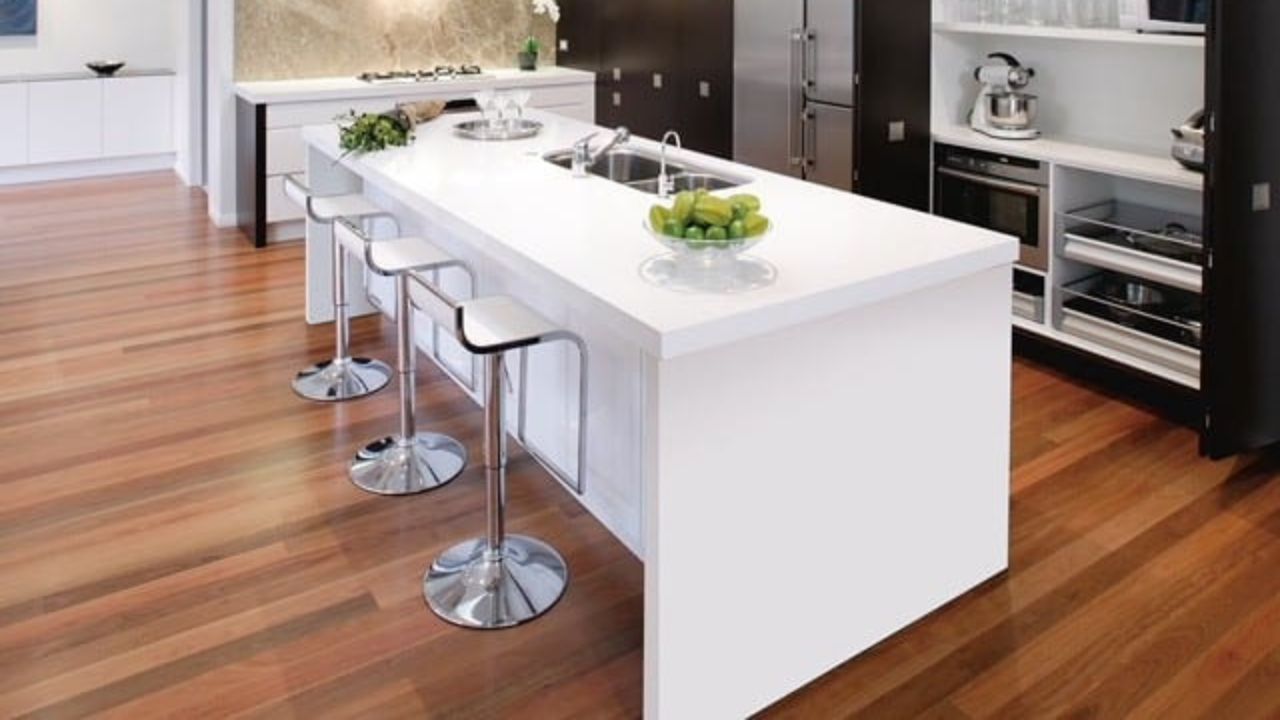
Pros Of Quartz (Engineered Stone):
- Highly durable and stain-resistant
- Available in endless colors and patterns
- Low maintenance compared to natural stone
- Uniform appearance
Cons Of Quartz (Engineered Stone):
- Not as heat-resistant as natural stone
- Can be expensive
- Limited to modern applications
13- Ledger Stone
Ledger Stone is a type of stacked natural stone that is often used for decorative walls, fireplaces, and outdoor facades. It offers a textured, three-dimensional look that adds a rustic charm to modern designs alike. It is weather-resistant and durable, and it brings visual depth without needing grout lines.
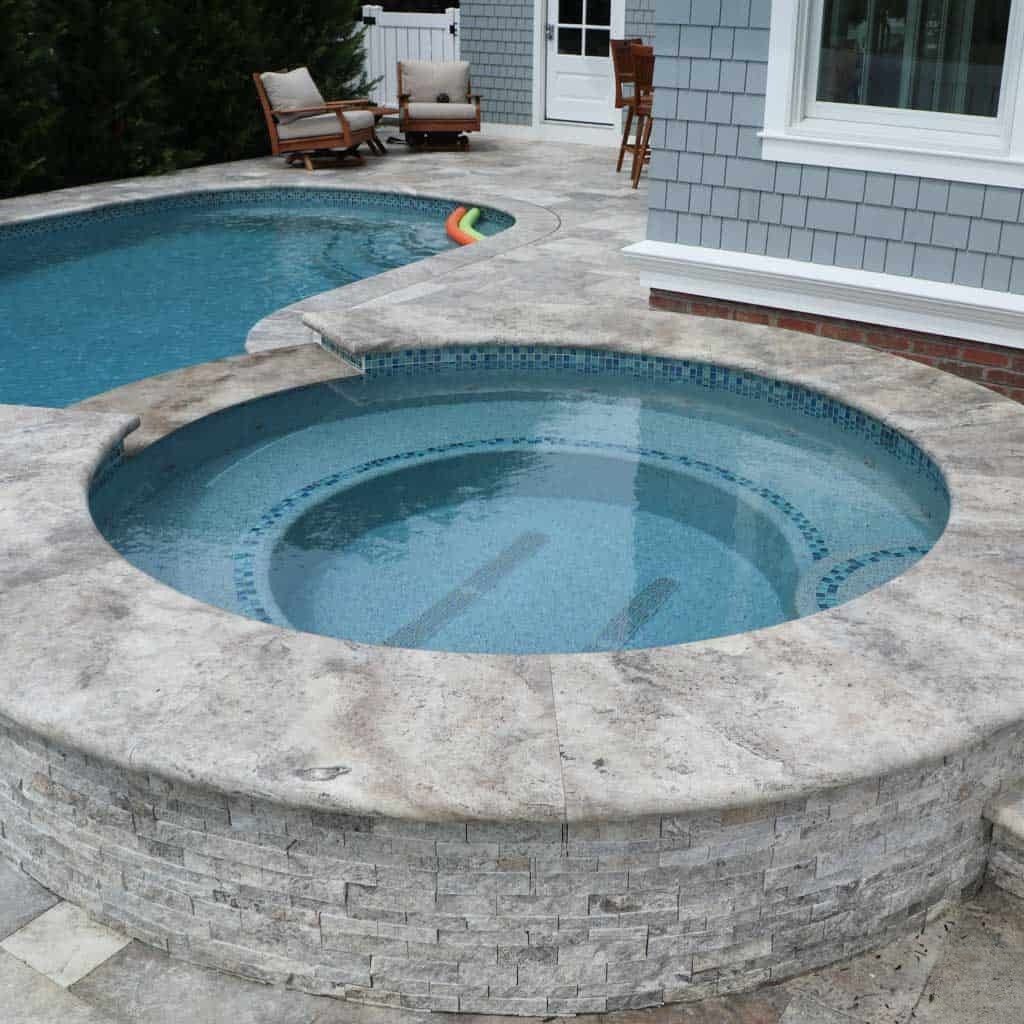
Pros of Ledger Stone:
- It offers a unique natural texture
- Long-lasting wit, durability, and weather resistance
- versatile in design.
Cons Of Ledger Stone:
- It comes with a higher installation cost,
- The resulting surface may seem uneven and trap dust.
14- Stone Veneer
Stone veneer is a thin layer of natural or manufactured stone applied to surfaces for decorative purposes. It mimics full stonework while reducing weight and cost. This is why it is ideal for interior walls, fireplaces, and exterior facades. You can find it in multiple finishes, which provides flexibility in modern construction.
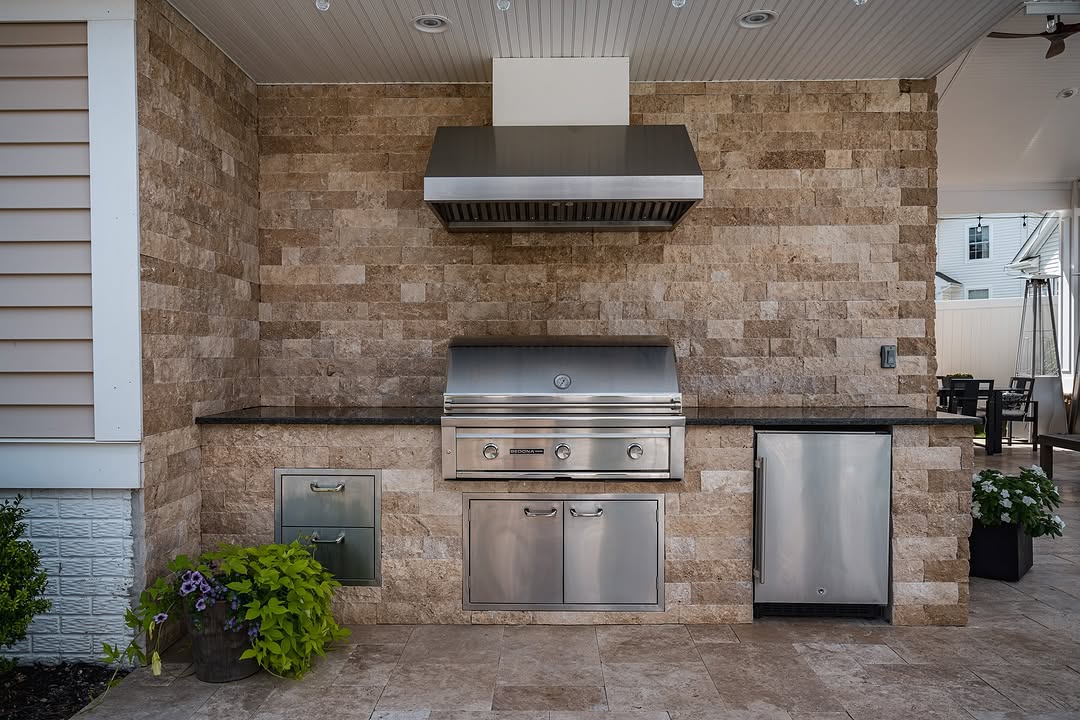
Pros Of Stone Veneer:
- It is lighter than other stones
- It comes with a lower price tag
- You can find it in a wide variety of designs.
Cons Of Stone Veneer:
- Less durable than full stone
- may require sealing.
15- Sintered Stone
Sintered Stone is an engineered stone surface crafted by compressing natural minerals under heat and pressure. It is widely popular for its strength, non-porous surface, and UV resistance. It is used in countertops, flooring, and outdoor kitchens. Its sleek look makes it a favorite in modern projects.

Pros Of Sintered Stone:
- Sintered stone is highly durable
- It has a higher stain-resistant
- Being natural stone, it is eco-friendly.
Cons Of Sintered Stone:
- The overall cost is higher
- It requires specialized installation.
Detailed Comparison of Types of Stone Used in Construction
Not all stones used in construction are equal, and none of them is inferior to the others. Some stones offer better durability, while some add luxurious charm and feel to the space. In the following table, we are comparing all the stone types used in construction to provide more information.
| Stone | Appearance & Color | Durability | Water Resistance | Workability | Cost Level | Common Uses | Limitations |
| Granite | Speckled, wide color range | Very High | Excellent | Hard to cut, needs advanced tools | High | Flooring, countertops, bridges, monuments | Expensive, heavy, requires sealing |
| Marble | Veined, elegant whites, greens, greys | Medium–High | Moderate | Easy to shape & polish | High | Flooring, walls, facades, decorative features | Porous, stains, scratches, not great outdoors |
| Limestone | Cream, beige, earthy tones | Medium | Moderate–Low | Easy to cut | Medium | Walls, flooring, facades | Porous, weak in acid rain, wears over time |
| Sandstone | Grainy, reddish, brown, yellow | Medium | Moderate | Easy to carve | Medium | Walls, paving, cladding | Absorbs water, not very strong, can flake |
| Slate | Dark grey, black, green, purple | High | Very High | Splits into thin sheets | Medium–High | Roofing, flooring, and wall cladding | Brittle edges, limited color range |
| Basalt | Dark grey to black, fine-grained | Very High | Excellent | Difficult to shape | Medium | Roads, pavements, and concrete aggregates | Hard to polish, limited decorative use |
| Laterite | Reddish, porous, earthy | Low–Medium | Low | Easy to cut when fresh | Low | Walls, foundations (rural buildings) | Weak, not durable in urban projects |
| Gneiss | Banded, streaked, granite-like | High | Good | Moderate | Medium–High | Flooring, walls, decorative use | Less uniform, not as strong as granite |
| Quartzite | White, grey, pink | Very High | Excellent | Hard, difficult to cut | High | Flooring, heavy-duty surfaces, monuments | Expensive, limited availability |
| Travertine | Cream, beige, tan, fibrous look | Medium | Moderate | Easy to polish | Medium–High | Flooring, wall facades, and bathrooms | Porous, needs sealing, prone to etching |
| Onyx | Translucent, decorative veins | Low | Low | Easy to cut & polish | Very High | Wall panels, luxury interiors | Fragile, expensive, and poor outdoor durability |
| Ledger Stone | Stacked, layered, rustic, or modern tones | High | Good | Moderate, needs skilled laying | Medium–High | Accent walls, fireplaces, and outdoor facades | Labor-intensive install, uneven surface traps dust |
| Stone Veneer | Thin layer, natural or manufactured look | Medium | Moderate | Easy to apply to surfaces | Medium | Interior walls, fireplaces, facades | Less durable than full stone, may need sealing |
| Sintered Stone | Sleek, engineered, wide finishes | Very High | Excellent | Needs specialized tools | High–Very High | Countertops, flooring, and outdoor kitchens | Expensive, requires professional installation |
Available for booking
MOBILE SHOWROOMS
Can’t visit our showroom? No problem! With NT Pavers’ mobile showroom service, we bring our wide range of stones, pavers, and marble right to your doorstep.
Book today, and our trailer or van showroom will visit you anywhere across the East Coast or Midwest—including VA, CT, Long Island, Manhattan, DC, Chicago, and more. Convenient, fast, and hassle-free!
FAQs on Types Of Stone Used in Construction
Let’s answer the most common questions about the stone types used in construction.
What is the most common stone used in construction?
Granite is the most common stone used in construction because of its durability, strength, and resistance to weathering.
Which stone is best for building foundations?
Basalt and granite are well-suited for foundations due to their high compressive strength and long-lasting stability.
What type of stone is used for decorative walls?
Sandstone, limestone, and slate are commonly used for decorative walls due to their natural textures and colors.
Which stone is preferred for flooring in homes?
Marble and granite are the preferred choices for home flooring for a polished, durable, and scratch-resistant look.
What is the strongest natural stone used in construction?
Granite is considered the strongest natural stone used in construction due to its compressive strength and resistance to wear.
Which stone is most affordable for construction projects?
Sandstone and limestone are generally the most affordable options.
What stones are best for outdoor construction?
Granite, basalt, and slate are best for outdoor use because they can withstand harsh weather, temperature change, and moisture.
Bottom Line
Different types of stone used in construction offer different and distinct benefits. Some offer a luxurious look, like marble or onyx, while some offer hard surfaces like granite and gneiss stone. Each stone has its pros and cons, so you should choose a stone that fits your aesthetic and performance expectations. Make sure to get your desired stone from a reputable natural stone supplier in New Jersey so you will get the best material without compromising on quality and performance.

